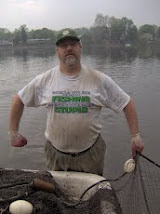A Sunday for Team VFH is just another day of the week. It is just another day to enjoy and imbibe and mooch. But, in South Carolina and I suspect most of the world, Sundays are reserved as a day of prayer and to give thanks. We are not church-going folk, but we're not blasphemous. Our piety runs further than a devotion to saving money. When presented with a solemn moment or artifact we are well aware of its importance and give it the attention it deserves. This will be explained later in this blog.
Because it was a Sunday, Beaufort and the environs were slow. Many area establishments were closed and so we figured we would cut our visit to Beaufort short by a day and get on to our next destination, Hilton Head Island, where we were staying with friends for a week. But, we were in Beaufort, South Carolina, a place and area of the world that I had wanted to visit for a long time. Would we ever return? We had come so far and had seen so very little here compared to the rest of our trip to South Carolina.
‘Would we ever return’, is a ponderous thought I often have when looking out on vistas and new places. How fleeting life can be, how swift the opportunities flit by and not grasped. “Stop, look, listen”, a dear mentor used to tell me. Advice well received by Team VFH… or at least me…. Janet is more of a mindset to get to the next destination, because after all we are supposed to be going to Hilton Head. At times I think she simply tolerates my “greg’s way” approach to things, but then only when there is convenience involved. Of course I'm kidding here, but today is a perfect example of her tolerating my maniacal need to explore.
LADY’S, ST. HELENA, FRIPP AND HUNTING ISLAND
Looking at maps of the sea island chain in South Carolina, Georgia and Florida, there are over 100 and all worth exploring (I think).
Across the Beaufort River are several islands:
Hunting Island State Park is a popular destination with the beach there highly rated by some travel brochures. It remains one of the last undeveloped lowcountry sea islands and there is a lighthouse erected in the 1800’s…we did not visit it.
Fripp Island is where the author Pat Conroy lives. It’s a gated community and NOT named after the guitarist Robert Fripp from the prog rock group King Crimson. It’s popular with visitors for the resort amenities and the efforts there to preserve the wildlife habit; island residents established an Audubon Club and had the entire island designated as a bird preserve.
Fripp is also evidently popular with alligators.
ALLIGATOR ATTACK!
We did not venture anywhere near there!
ALLIGATOR ATTACK!
We did not venture anywhere near there!
On both Hunting and Fripp Islands Viet Nam scenes from Forrest Gump were filmed.
Lady’s Island is directly across the beautiful Woods Memorial Bridge from Beaufort. The bridge was used in the jogging scene from Forrest Gump. It is a largely unincorporated. We HAD to drive there because we were on our way to St. Helena Island.
Janet wanted to visit St. Helena because it was another stop on the National Geographic Road Trip series for the Lowcountry. The island is the epicenter for the African Gullah culture and language of geechee. It is where the community of Frogmore is located and where the name Frogmore Stew was coined in the 60’s, although lowcountry boil has deep roots in the Gullah culture and is much older. Lowcountry boil is a way of cooking large amounts and many ingredients of food for family and friends at the same time.
We should have stopped for some boil, but, we were on our way to the Penn school.
THE PORT ROYAL EXPERIMENT
When the Civil War began in 1861 one of the objectives of the Union forces was to deny the Confederates a deep water port and Port Royal, just south of Beaufort was considered very important. The Union was successful and slaves from the area were liberated as the Union occupied the area throughout the Civil War. The Penn School was part of the Port Royal experiment to help abandoned slaves learn to cope with freedom by teaching them to read and survive economically. It was one of several such schools established on St. Helena Island. The leaders of this experiment were mostly philanthropists, abolitionists and missionaries from Pennsylvania, hence the name. The experiment worked for a while. African Americans became self-sufficient and with guidance through the Penn School thrived. There was a strong desire and a feeling with the freed people they had the moral right to claim the lands they worked. People widely expected to legally claim 40 acres and a mule with the war's end.
But in 1865, President Andrew Johnson had all lands returned to the previous owners.
We made a right off Route 21 in Frogmore when we saw the sign for the Penn School. It was midday on a Sunday and all the church parking lots we passed were filled. We knew the facility would be closed, but wanted to see it anyway. Janet is a schoolmarm and is well aware of the power of education. We got out in the heat and walked around and peered into windows and snapped a few pictures. The Penn School, now called the Penn Center, taught African Americans for 86 years and then shifted its focus to offer services like day care and health training as well as promoting and preserving the Gullah Sea Island culture. This indeed was a solemn stop for us. We walked the grounds reverently and spoke in hushed tones
We then quietly drove the length of the road, aptly named Land's End Road to briefly visit the Fort Fremont section of St. Helena Island and to peer out at Parris Island and our next destination, Hilton Head.
Thanks for reading.
Janet and greg





















































